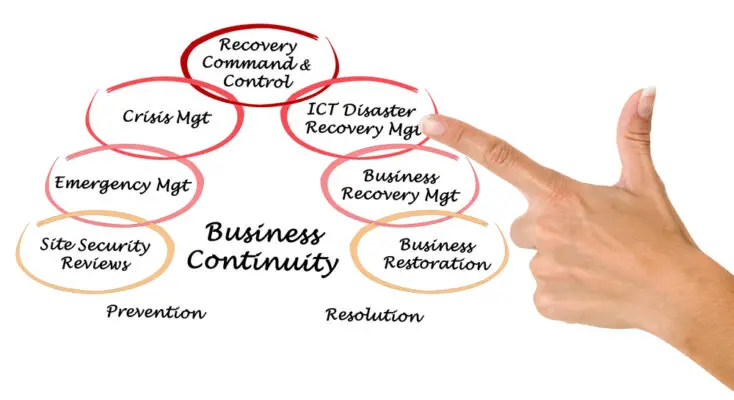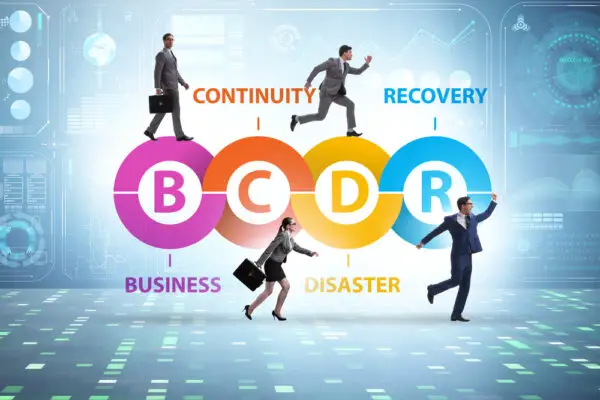As businesses become increasingly digital, it is important for companies to invest in a Business Continuity Management System (BCMS) to ensure their continued success. A comprehensive guide to business continuity management systems Implementation is essential.
Your business will be better prepared to manage challenges and disruptions resulting from unexpected events, such as pandemics or natural disasters.
As businesses strive to remain competitive and stay afloat in an increasingly complex and evolving digital landscape, the importance of implementing a comprehensive business continuity management system (BCMS) is critical. With the right BCMS in place, organizations can benefit from improved operational efficiency.
Strengthened customer protection and better resilience against cyber-risks and other potential disruptions – ensuring that their organization is well-equipped for whatever challenges come its way.
The key to success with BCMS implementation lies in understanding the underlying processes involved and taking steps to ensure that your organization will have a sustainable continuity program in place.
This blog post examines the fundamentals of BCMS implementation while exploring the necessary actions required by companies looking to effectively safeguard their operations against minor or major disasters as they continue down their path toward success.
What is Business Continuity Management?
Business Continuity Management (BCM) is essential to any modern business’s operations. It involves planning ahead for potential disruptions and having strategies in place to mitigate the impact they would have on your business.
A BCMS provides an organized approach to managing these strategies, ensuring that all departments within the company are aware of their roles and responsibilities if a disruption occurs. The system also helps identify areas of risk so that you can take preventive measures to reduce the likelihood of them occurring.

Implementing a Business Continuity Management System
It is essential for organizations to have a comprehensive plan in place to ensure mission-critical operations proceed during a disruption. Implementing a BCM system requires careful consideration of several factors.
Depending on the business continuity strategy, an organization can choose business continuity solutions or just use business continuity strategies available in the bcm policy.
Organizations must first assess their risk environment, which includes identifying potential risks, analyzing their impact on the organization, and determining the likelihood of them occurring through a business impact analysis.
This will help organizations prioritize the risks they must address and develop strategies to mitigate them. Organizations should also consider the resources needed to implement their BCM systems, such as personnel, technology, and budget.
Organizations must also create detailed plans that cover all aspects of their operations, including emergency response procedures, communication protocols, backup systems, data recovery plans, and more.
These plans should be regularly tested and updated to ensure they are effective when needed. Organizations should ensure they have proper training and awareness programs in place so that employees understand how to respond in an emergency that will affect critical business processes.
it is important to ensure that all employees understand its purpose and how it works. This includes setting expectations for all staff members, so everyone knows their roles and responsibilities should an emergency occur.
It is also critical for senior management to provide regular training on emergency procedures and protocols related to the BCMS. Additionally, it is important to conduct regular reviews and updates of existing policies related to the system so that they remain relevant in today’s ever-changing landscape.
Business continuity plans are essential for business continuity and are based on minimizing downtime and disruption. Unless your business is fully prepared for a disaster, this may have disastrous implications for the profitability of your company as a result.
Business continuity programs outline all of the risks that affect normal operating activities.
Personnel
Having personnel dedicated to implementing and managing the BCMS is key to its success. This personnel should know the international standard ISO 22301 requirements that must be followed when creating a BCMS. The personnel needs to be led by a business continuity team.
They should also have experience developing plans and procedures that will help minimize the effects of disruptions on business operations. Additionally, they should be able to communicate the importance of conforming to the BCMS process from the top down within the organization.
The personnel responsible for implementing a BCMS should also be aware of potential risks that could affect business operations and be able to identify areas where improvements can be made.
This includes identifying potential threats, understanding how they could impact operations, and developing mitigation strategies. Organizations can ensure that their BCMS is up-to-date and effective in protecting their business interests by having personnel dedicated to this task.
Personnel dedicated to implementing a Business Continuity Management System is essential for any organization looking to maintain continuity of operations during unexpected events while also protecting its reputation.
Technology
Technology provides organizations with the tools to create and maintain strong response and recovery procedures, which are key components of BCMS. Business continuity software is integral to planning and management, as it helps organizations identify potential risks,
Develop strategies to mitigate them and create plans for responding to disruptions. Additionally, technology can help organizations quantify the benefits of implementing BCMS, such as being 8% less likely to suffer future data breaches or losses.
Information technologies also enhance continuity by improving the reliability and availability of technology. This includes cloud computing, virtualization, backup systems, and data replication solutions. These technologies help ensure businesses have access to their data even if their primary system fails.
Technology is essential for implementing BCMS to protect an organization’s reputation, boost employee morale, build relationships with third parties and subsidiaries, and help prevent future data breaches or losses.
Budget
The budget should include the initial project operating costs, such as software and hardware, training for staff, and any other resources needed to implement the system. It should also cover ongoing maintenance costs, such as monitoring and testing of the system and any additional resources needed for future updates or upgrades.
The budget should account for any potential losses due to disruptions caused by unforeseen events.
In creating a budget for a BCMS, it is important to get management’s support to ensure sufficient funds are allocated. This can be done by presenting a detailed plan outlining the necessary expenses for implementing and maintaining the system.
Additionally, it is important to demonstrate how having a BCMS will benefit the organization in terms of increased efficiency and cost savings over time.
An adequate budget is essential when implementing a BCMS. By considering all of the necessary expenses associated with its implementation and maintenance, organizations can ensure that their systems are properly set up and maintained to prepare for any potential disruptions effectively.
Disaster recovery plans
A Disaster Recovery Plan (DRP) is essential to any business’ risk management strategy. It outlines the steps and procedures to be taken in the event of a disaster, such as a natural disaster or cyber attack, which can disrupt normal operations.
The DRP should include recovery strategies, legal and regulatory requirements, and detailed instructions on responding to unplanned incidents.
Recovery strategies should include plans for restoring data, hardware, software, and other resources that are necessary for normal operations. These strategies should also include plans for protecting data from future disasters.
Legal and regulatory requirements should be addressed in the plan as well; these may include compliance with local laws or industry standards. Detailed instructions on how to respond to unplanned incidents should be included in the plan; these instructions should cover all aspects of responding to a disaster, from initial response through recovery and restoration.
Key Principles of Business Continuity
Business continuity is built on numerous key principles for effective operations. A Board of Directors or Executive Board of Directors must ensure business continuity for the organization and understand this responsibility.
Continuity is a critical element of risk management. In case of interruption, a lack of clear responsibility, authority, and role could make the plan unreliable.
Risk assessment: Identifying potential risks and threats to your organization and developing strategies to mitigate them.
Impact analysis: Understanding the effects of a disruption on your organization’s functions and processes.
Business continuity planning: Developing plans that outline how the organization will respond during a disruption.
Testing and review: Regularly reviewing plans to ensure they are up-to-date with current needs.
Training: Ensuring personnel is trained on how to respond in the event of disruption so they can act quickly and effectively.
Assess Risks
Risk assessment in BCM involves analyzing the potential risks associated with various organizational activities and processes. This includes assessing the likelihood of a risk occurring, its impact on operations, and the measures needed to mitigate or reduce its effects.
Organizations should consider factors such as natural disasters, cyberattacks, technology failures, staff safety, data loss, IT functions disruption and other critical records. Organizations should also develop measures to resolve identified risks and opportunities.
These measures may include developing disaster recovery plans (DRPs), business impact analysis (BIA), testing procedures, and other preventive strategies.
Organizations should also consider how changes to their BCMS will affect their risk assessment process. It is important for organizations to regularly review their risk assessment process to ensure that they are adequately prepared for any potential disruptions or threats they may face.
BCPs are intended for assessing the risks and opportunities in your business operations.

Show Where Specific Critical Assets and Data Are
The key goal of the BCP is to locate critical storage locations such as computer equipment or servers as well as other business assets. So recovery teams can begin recovery processes without confusion, even without key IT personnel.
The team must determine when to start moving operations. Your plan also includes the details for obtaining backup office space in an emergency.
Analyze the Potential Impact of Disruption
The potential impacts of disruption include decreased consumer confidence, reduced customer spending, increased crime rates, and decreased investment in the region. These impacts can cause businesses to close their doors, leave people unemployed, and force them to seek alternative methods of sustaining themselves.
Furthermore, disruption also affects infrastructure, resources, and amenities vital to local communities. Extreme weather events can lead to the destruction of buildings which will need extensive repair work that drains public funds.
Political disruption can lead to closing businesses or factories, throwing people out of employment; economic downturns could cause investors to pull out their funds, resulting in further unemployment and financial hardship for many households.
To mitigate the potential impact of disruption, it is important for governments and citizens alike to take steps towards resilience building. This includes investing in resilient infrastructure that can withstand extreme weather events;
Creating policies that promote stability and security; educating people about disaster preparedness; providing support such as food aid or temporary housing for those affected by disruption; and investing in research into new technologies that could help alleviate some of the negative impacts caused by existing disruptions.
The company will assess its business effects by analyzing its impact on business. It also can capture a financial loss in operational operations for an organization. The information obtained aids the business continuity plan team in determining restoration timelines & priorities.
Establish a Team
The best approach is to build and coordinate an integrated team of emergency personnel who will be responsible for managing all the emergency management tasks. Select several managers to be involved with the work.
I recommend that a single person is assigned to lead the team and delegates a specific role or responsibility. Each of them will have their own role and responsibility. The number of employees varies largely according to how much you are operating and the nature of your company.
Contact Information
This list includes contacts with all stakeholders, key workers, backups service providers, emergency responders, site operators, and facility managers. The business continuity process requires business continuity requirements, and contact information is crucial.
Conduct a Gap Analysis to Identify the Resources Needed
Gap analysis is important for identifying resources needed for a successful project when using business content management systems (bcms). It analyzes resources and processes and compares them to what is needed to achieve an ideal future state.
In conducting a gap analysis specifically related to bcms, it’s important to consider the business’s overall organizational structure and needs, such as user experience requirements, scalability, and purchasing power.
These areas must be considered when developing a list of actionable steps to bring the organization closer to its desired goals. When assessing areas requiring resources, it may also be necessary to research existing options available within the bcms space to determine which solutions best meet the team’s needs.
This includes looking at features like data storage and compliance capabilities and functionality-related item metadata management or AI-powered search capabilities.
Once all areas requiring resources are identified and addressed, it’s important for businesses and teams using bcms technology to monitor progress over time and make adjustments as needed throughout the course of their ongoing projects or initiatives.
The resources are available to recover from a BIA investigation. The gap between current resources and recovery requirements is identified in assessing gaps. After this analysis, it will be necessary to analyze recovery plans.
React quickly in times of crisis with a business continuity management system
Can you resume productivity operations immediately if your business processes fail? The BSMC system, based upon ISO 22301 and ISO 227031 allows for the quick response and accurate IT disaster planning and recovery planning.
A BCMS combines interconnected methods, procedures, and standards that ensure the continued use of critical processes and is integrated into and based upon existing management systems. Business continuity activities must be activated during emergencies.
How Streamlining Business Operations Helped Create a Safer Environment Post-COVID Shutdown
The COVID-19 pandemic has forced businesses to make difficult decisions about how to manage their operations effectively. For many companies, these changes resulted in streamlining their business practices and ensuring that safety protocols were implemented properly.
First, one of the most effective strategies was transitioning from an in-person environment to a remote or digital workspace. This allowed for social distancing measures to be implemented, limiting the amount of physical contact between colleagues and reducing the risk of spreading the virus.
Additionally, some businesses adopted contactless delivery systems, which made it easier for customers to access goods and services without having to come into physical contact with anyone else.
Another key factor was moving towards automated processes, such as order fulfillment, customer service inquiries, and payroll management.
Automation reduced the need for manual labor, minimizing potential human interaction and improving overall efficiency across all departments, ultimately allowing the company to function under unprecedentedly low staffing levels while still maintaining productivity.
Additionally, businesses have implemented more stringent safety protocols such as regularly scheduled sanitation routines and employee/visitor temperature checks upon entrance into buildings or premises. Furthermore, many companies are now implementing mandatory face masks or other forms of protection when undertaking certain activities on behalf of their employers.
These measures are being followed at work and in public areas where workers may live or travel throughout their day – helping protect everyone from potential exposure risks.
Finally, digital communication technologies have been instrumental in reducing face-to-face interactions inside and outside the workplace – especially for those working remotely or dealing with customers online.
Video conferencing software like Zoom or Skype provide easy access for workers to join meetings without being physically present; messaging applications like Slack enable efficient conversations among colleagues; and file sharing services like Dropbox allow data to be exchanged quickly without any physical exchange taking place whatsoever – all providing essential tools which have helped create a more secure operating environment amidst uncertain times.
Software for Internal Auditing
Improve your business continuity plan through a thorough assessment of assets. This helps detect weaknesses or faultlines in an infrastructure. A comprehensive audit of your company’s BCP should determine its size and scope.
It also looks to determine whether procedures are effective in avoiding a disaster. It may be possible for your business to perform internal audits manually. To get an accurate audit, you should also use specialized BCP auditing tools like Onspring and Open-AudIT.
Effective Business Continuity Tools
As we have seen, businesses face numerous threats that could disrupt their operations immediately. To survive a business disruption, companies must prepare by utilizing a robust business continuity tool to help minimize disruptions and ensure continuity in an event.
It is important that one obtains proper equipment that helps to ensure a successful operation. Proper equipment ensures communication is kept uninterrupted without losing or damaging valuable information.
Smoothen Your Business Continuity Planning and Implementation With SweetProcess
SweetProcess provides an easy-to-use software solution designed to help the companies plan, document, and automate their critical business processes – allowing them to confidently manage any disruption and continue normal operations with minimal disruption.
SweetProcess simplifies the process of creating business resilience plans by providing clear guidance on developing strategies for areas such as risk assessment, disaster recovery prioritization, communication strategies, and more.
Users can document all aspects of their new or existing processes – from procedures and descriptions to training materials – which can then be accessed easily during times of crisis. The platform also helps identify potential gaps in business continuity plans by monitoring key performance indicators (KPIs), allowing users to correct any issues before they become serious problems proactively.
The system’s automation capabilities provide additional convenience when implementing these important plans: users can integrate tasks between different systems using automated triggers; assign tasks with reminders via email notifications; securely store data; keep track of progress automatically; and generate reports quickly.
Impact Analysis, Risk Assessment, and Mitigation
This process involves identifying and understanding the risks to operations that could affect your organization, including disasters and outages. They also outline a method for protecting yourself from possible damages like a loss of income, business interruption, or penalties.
Common Challenges Faced When Creating and Implementing Business Continuity Plans
BCPs are valuable documentation for the protection of your company and for minimizing disruption. Unfortunately, developing a new project is difficult due to numerous challenges. How do you tackle obstacles? Below are some more frequently encountered problems in implementing a business continuity management system.
Insufficient technology can make the plan ineffective
A BCP deals with technical problems such as technological failures, data loss, and transmission problems in general. It will take special tools and money to accomplish these goals, to overcome these obstacles. Using the right tool, you can optimize a product’s efficiency and improve the service’s quality.
Lack of constant training reduces the long-term effect
The BCP must continually update to ensure the best possible performance and safety.
Not routinely testing, even after top-notch planning, can reduce the impact
A simple testing method can help determine if your BCP can be implemented effectively.
Lack of focus can hinder the creation process
A BCP is susceptible to a poor-defined way. The plan should clearly explain the recovery process.
Conclusion
Implementing a Business Continuity Management System should be seen as an investment rather than an expense because it can help protect your business against unforeseen events or disasters. Investing in a BCMS can give you peace of mind knowing that your company has taken steps towards protecting itself from risks.
The risks are associated with disruptions or emergencies—ultimately helping you maintain operations even during difficult times. With careful planning and regular reviews, you can ensure that your BCMS remains effective over time, allowing you to focus on continuing operations without interruption or delay.
Have you read?
What is a business continuity management system?
Business continuity management systems.
Bcms business continuity management system.
Why business continuity management system?
Objectives of business continuity management system.
Business continuity management system ISO 22301:2019 business continuity management requirements.

Chris Ekai is a Risk Management expert with over 10 years of experience in the field. He has a Master’s(MSc) degree in Risk Management from University of Portsmouth and is a CPA and Finance professional. He currently works as a Content Manager at Risk Publishing, writing about Enterprise Risk Management, Business Continuity Management and Project Management.



